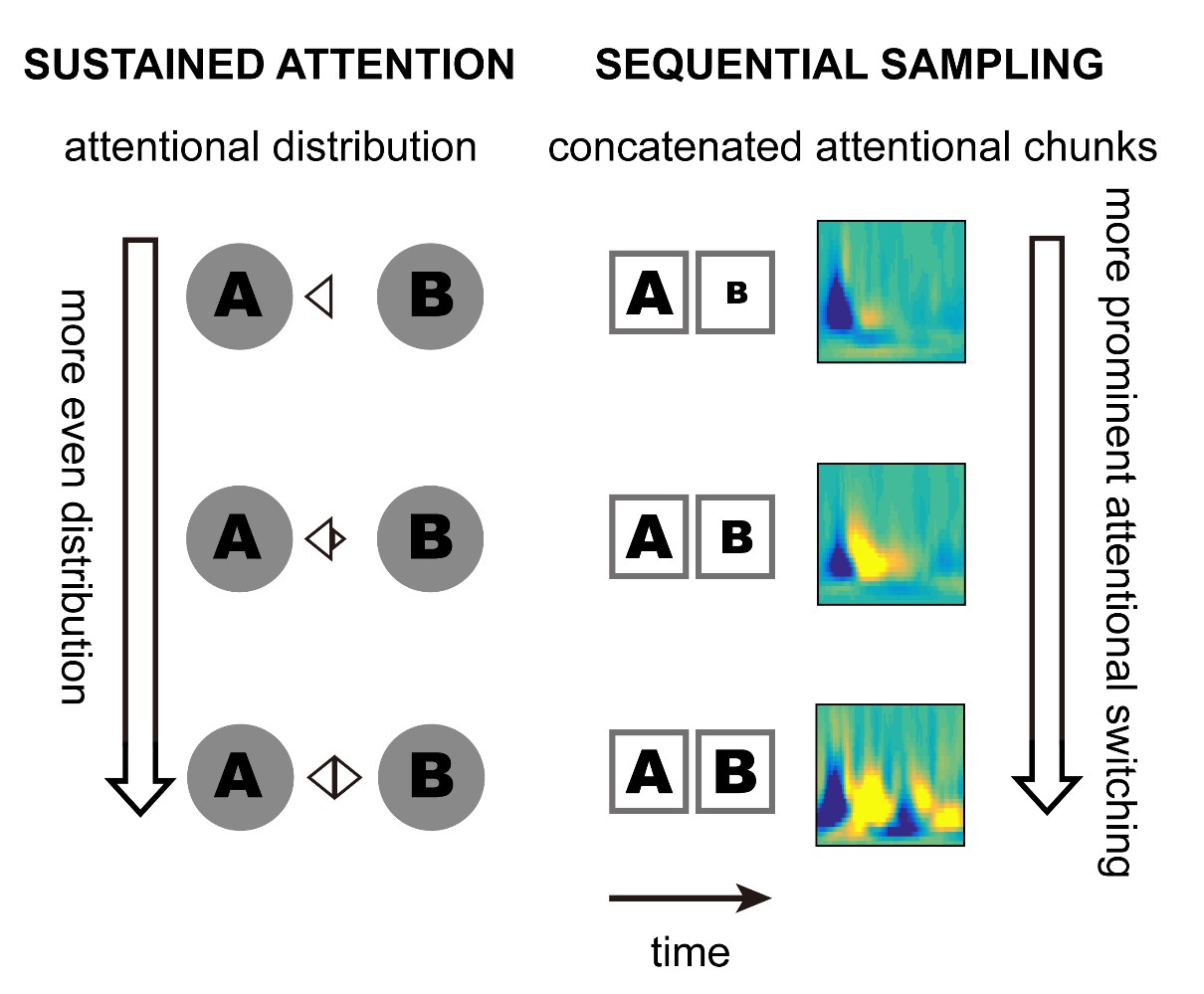Huan Luo’s group at the PKU-IDG/McGovern Institute for Brain Research, School of Psychological and Cognitive Sciences at Peking University has recently published a paper on PLoS Biology (Jia, Liu, Fang, & Luo, 2017) titled “Sequential sampling of visual objects during sustained attention”. They employed EEG recordings in combination with a temporal response function (TRF) method to examine the dynamic neural mechanism underlying multi-object attention, and demonstrated that attention samples multiple visual objects sequentially in time. This paper has been specifically introduced and discussed in a Primer of PLoS Biology (Jensen & Vissers, 2017).
In a crowded visual scene, attention must be efficiently and flexibly distributed over time and space to accommodate different task contexts. Recent studies, including our own behavioral work (Song et al., 2014; Huang e al., 2015) have proposed that attention is a dynamic process that organizes copious information temporally. However, how the brain coordinates attention among multiple visual objects remains largely unknown.
In this EEG study, Luo’s group employed a TRF approach to extract object-specific neuronal impulse responses during multi-object selective attention (Figure 1). They demonstrate that attention rhythmically switches among visual objects every ~200 ms, even when attention is instructed to mostly stay on one object, and the attentional sampling profile adaptively changes in various task contexts (Figure 2). This work provides direct neural evidence supporting that multiple objects are sequentially sorted according to their priority in attentional contexts. The results also suggest that attention is intrinsically dynamic, acting as a series of concatenating attentional chunks that operate on one object at one time to maintain awareness of the whole scene (see illustration in Figure 2).
Dr. Huan Luo is the corresponding author, and Jianrong Jia, the 3nd year PhD student at the Center for Life Sciences, is the first author. Other authors include Prof. Fang Fang and Dr. Ling Liu. This work was supported by the National Natural Science Foundation of China Grant to Dr. Huan Luo.

Figure 1. Using TRF approach to dissociate object-specific neuronal responses

Figure 2. Conceptual illustration of concatenated attentional temporal chunks
Full text:
http://journals.plos.org/plosbiology/article?id=10.1371/journal.pbio.2001903
The Primer:
http://journals.plos.org/plosbiology/article?id=10.1371/journal.pbio.2003230
References:
Jia, J., Liu, L., Fang, F., & Luo, H. (2017). Sequential sampling of visual objects during sustained attention. PLOS Biology , 15 (6), e2001903.
Jensen, O., & Vissers, M. (2017). Multiple visual objects are sampled sequentially. PLoS Biology, 15 (7), e2003230. (Primer for Jia et al. )
Huang, Y., Chen, L., & Luo, H. (2015). Behavioral Oscillation in Priming: Competing Perceptual Predictions Conveyed in Alternating Theta-Band Rhythms. Journal of Neuroscience, 35 (6), 2830–2837.
Song, K., Meng, M., Chen, L., Zhou, K., & Luo, H. (2014). Behavioral Oscillations in Attention: Rhythmic α Pulses Mediated through θ Band. Journal of Neuroscience , 34 (14), 4837–4844.